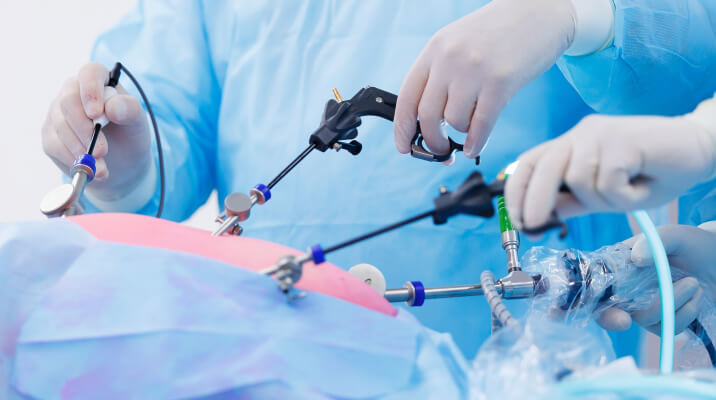Minimally invasive procedures are becoming a preferred choice in women’s healthcare, offering treatments that are safer, faster, and less painful than traditional surgery. Many women in Singapore are looking for options that allow quicker recovery and more comfortable experiences. A trusted https://endofibroid.com.sg/guide-to-womens-health-in-singapore-when-should-i-see-a-gynaecologist/ provides access to these advanced procedures, combining modern technology with expert care. Whether for routine check-ups, treatment of common gynaecological conditions, or preventive care, a womens specialist clinic Singapore ensures personalised support and guidance. Read on to explore the minimally invasive treatment options available for women’s health.
What Are Minimally Invasive Treatments?
Minimally invasive treatments are procedures designed to address gynaecological conditions with as little disruption to the body as possible. Unlike traditional surgery that requires large incisions, these treatments use small cuts, scopes, or specialized instruments, allowing for faster recovery and less discomfort.
Laparoscopy
One common type is laparoscopy, which involves inserting a thin, lighted tube through a small incision in the abdomen. It is often used to diagnose and treat conditions such as ovarian cysts, fibroids, and endometriosis.
Hysteroscopy
Another widely used procedure is hysteroscopy, where a tiny camera is inserted through the vagina into the uterus. This allows the doctor to examine the uterine cavity and perform treatments like polyp removal or addressing abnormal bleeding without the need for open surgery.
Laparoscopic Hysterectomy
Vaginal or laparoscopic hysterectomy is another option for women who need a uterus removed. Using minimally invasive techniques, the procedure avoids large abdominal incisions, resulting in shorter hospital stays and quicker return to daily life.
Focus of Minimally Invasive Treatments
Minimally invasive treatments offer several advantages for women’s health. Overall, minimally invasive treatments will focus on:
- Reduced pain – smaller incisions mean less discomfort during and after procedures.
- Faster recovery – return to daily activities sooner than with traditional surgery.
- Minimal scarring – tiny cuts or natural openings reduce visible marks.
- Lower risk of complications – less chance of infection or excessive blood loss.
- Shorter hospital stay – more convenient and comfortable for patients.
At a trusted womens specialist clinic Singapore, these treatments are performed with advanced technology and expert care, ensuring safe and personalised outcomes.
Common Gynaecological Conditions Treated
Minimally invasive treatments allow women to manage their health conditions with less pain, smaller scars, and shorter recovery periods. These procedures are designed to treat issues with less pain, smaller scars, and faster recovery. Common issues treated with these methods include:
- Fibroids – Non-cancerous growths in the uterus can cause heavy bleeding, pain, or fertility problems. Minimally invasive techniques like laparoscopic myomectomy help remove fibroids while preserving the uterus.
- Ovarian cysts – Fluid-filled sacs in the ovaries can be monitored or removed using laparoscopic surgery, avoiding large abdominal incisions.
- Endometriosis – Tissue growing outside the uterus can cause severe pain and fertility challenges. Laparoscopy allows precise removal or treatment of endometrial tissue.
- Uterine polyps – Growths inside the uterus may lead to irregular bleeding. Hysteroscopic removal is a quick and safe solution.
- Abnormal uterine bleeding – Persistent or heavy bleeding can be evaluated and treated through minimally invasive procedures to restore regular cycles.
- Pelvic adhesions or scar tissue – These can result from prior surgeries or infections and may cause pain or fertility issues. Laparoscopic techniques help release adhesions safely.
Who Is at Risk for Gynaecological Conditions?
Women may be at higher risk for gynaecological conditions due to a combination of age, genetics, lifestyle, and medical history. Key risk factors include:
- Age and hormonal changes – Women in their 30s and 40s are more likely to develop fibroids, while hormonal fluctuations can contribute to irregular periods or endometriosis.
- Family history – Close relatives with fibroids, ovarian cysts, or other gynaecological conditions can increase your likelihood of developing similar issues.
- Lifestyle factors – Obesity, poor diet, and high stress levels can affect reproductive health.
- Medical history – Previous pelvic infections, surgeries, or untreated menstrual problems may increase the risk of conditions like pelvic adhesions or chronic pain.
- Symptoms to watch for – Heavy bleeding, severe pain, irregular cycles, or fertility concerns should prompt evaluation by a specialist.
When to See a Women’s Specialist?
Knowing when to consult a gynaecologist is essential for maintaining optimal reproductive health. While routine check-ups are recommended for all women, certain signs may indicate the need for earlier medical evaluation.
Watch for these symptoms:
- Persistent or unusually heavy menstrual bleeding
- Severe pelvic or abdominal pain
- Irregular menstrual cycles or sudden changes in periods
- Pain during intercourse
- Fertility challenges or difficulty conceiving
- Unexplained bloating or abdominal swelling
Women experiencing any of these symptoms should not wait to seek medical advice. Early consultation allows for timely diagnosis, which can prevent complications and improve treatment outcomes.
Conclusion
Minimally invasive treatments offer women a safer, more comfortable, and effective way to manage gynaecological conditions such as fibroids, ovarian cysts, and endometriosis. By choosing a trusted womens specialist clinic in Singapore, patients can benefit from expert care, advanced technology, and personalised treatment plans that prioritise both health and wellbeing. Explore minimally invasive treatments in our clinic at:


